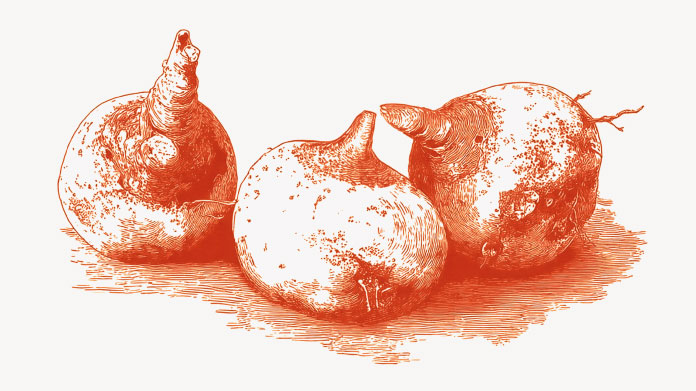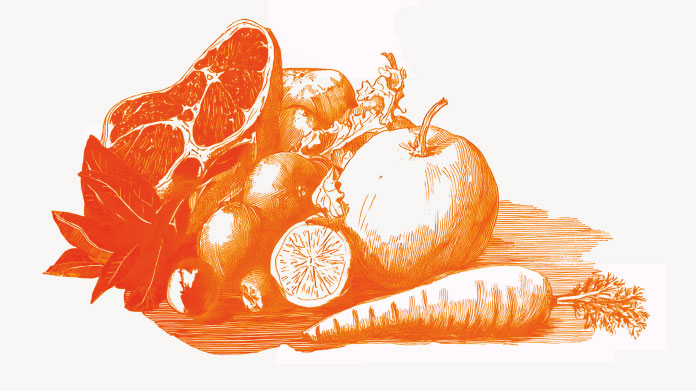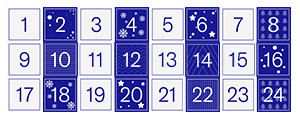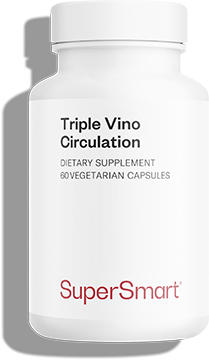How many calories should you eat and burn each day?
How can you slim down and lose fat without also losing muscle (and maybe even gain muscle)? We give you the lowdown on daily calorie intake and expenditure.

Calories: a measure of energy consumed and expended
Originally, a calorie was the term used for a a unit of energy in physics, 1 calorie corresponding to the amount of energy needed to raise the temperature of 1 gram of water from 14.5°C to 15.5°C at a pressure of 1 standard atmosphere.
Now replaced in physics by the word joule, the term calorie is still used in the field of dietetics to measure the amount of energy provided to the body by food, and the amount of energy expended by the body (1).
In fact, in dietetics and nutrition, the term actually used is kilocalories, not calories. For example:
- 1 gram of fat provides 9 kCal ;
- 1 gram of protein provides 4kCal;
- 1 gram of carbohydrates provides 4 kCal.
Basal metabolic rate: the starting point
Basal metabolic rate measures the amount of energy expended by the body at rest: to keep your organs functioning (digestive system, brain, heart, lungs, muscles, etc.), your body has to expend energy (2).
So even if you sit at a desk all day, you will be using energy. However, the amount of energy expended by your body will depend primarily on your body composition, namely your percentage of fat mass and muscle mass: the higher your muscle mass, the more calories you expend at rest.
According to the World Health Organization (WHO): (3-4)
- a young man of 25, weighing 65 kilos, who sleeps for 8 hours at night, works in an office for 8 hours a day and does various non-work activities for the remaining 8 hours a day, including exercise, has a daily energy requirement of 2500 kCal;
- a young woman of 25, weighing 55 kilos, with her day divided up in the same way, has a daily energy requirement of 2000 kCal.
Basal metabolic rate for men
For men, the formula used for calculating basal metabolic rate is: (10.0 x weight in kilograms) + (6.25 x height in centimetres) – (5.00 x age in years) + 5. For example, for a man of 50 who is 1 metre 78 tall and weighs 65 kilos, the basal metabolic rate would be 10 x 65 + 6.25 x 178 – 5 x 50 + 5, which is around 1500 kCal (5).
Basal metabolic rate for women
For women, the formula is: (10.0 x weight in kilograms) + (6.25 x height in centimetres) – (5.00 x age in years) – 161. So for a woman of 50, who is 1 metre 62 tall and weighs 50 kilos, the basal metabolic rate would be 10 x 50 + 6.25 x 162 – 5 x 50 – 161, which is around 1100 kCal (6).
Exercise-related modifiers
Once you have calculated your basal metabolic rate, you then need to apply a coefficient which depends on your level of physical activity:
- 1.1 for a sedentary lifestyle;
- 1.2 if you engage in light physical activity twice a week;
- 1.3 if you take moderate exercise 3 to 4 times a week;
- 1.4 if you take moderate exercise every day;
- 1.5 if you engage in intensive exercise 6 to 7 times a week.
How many calories do you need to burn to lose weight?
On paper, losing weight is simple: all you need to do is expend more energy than you consume. Your body will then draw on its reserves to make up the difference, and hey presto, you lose weight.
However, if you don’t do any exercise, you will still lose fat mass but your body will also tap into your unused muscle mass, in order to maintain a calorie reserve in adipose tissue.
So the best way of losing weight is to ramp up your level of physical activity, without also increasing your calorie intake: that way, you automatically expend more than you take in. You lose weight while preventing loss of muscle.
Alongside your weight loss diet and exercise programme, it can also help to take dietary supplements that help reduce the storing of fat, to counteract the body’s natural tendency to do just that (such as Garcinia cambogia). (7)
In fact, in order to achieve lasting weight loss without the ‘yo-yo’ effect, it’s best to restrict yourself to a calorie deficit of 10%-20%. In practical terms, this means that if your daily calorie requirement, including physical activity, is 2000 kCal, you need to eat between 1600 kCal and 1800 kCal a day to lose weight (8).
Not all calories are the same!
Nutritional quality comes first!
Be careful, though: not all calories are the same. A food’s nutritional quality is ultimately much more important than its calorie content.
For example, 10 grams of milk chocolate provides the same amount of calories as 300 grams of courgettes, but the chocolate contains a lot of unhealthy carbs and fats.
By way of example, a correctly-proportioned calorie intake is considered to be as follows: (9)
- 20% protein;
- 45%-50% carbohydrates;
- 30% fats (healthy, unsaturated ones).
Satiety: friend or enemy of the dieter?
The main difficulty with dieting is managing the hunger that comes from instigating a deficit in calories. That’s why it’s best to choose foods that promote a feeling of satiety without providing lots of calories (10).
We’ve just mentioned courgettes, but there are many other foods that fit the bill. For example, when a craving strikes, eating an apple and drinking a large glass of water will fill you up and kill the urge to snack, at least for an hour or two.
Splitting meals can therefore be a good option: rather than eating 3 large meals a day, have a light breakfast, then a small snack at 10am, a light lunch, a healthy snack at 4pm, and a light dinner in the evening.
You can also take advantage of dietary supplements that promote the feeling of satiety:
- carob seed fibres , for example, delay emptying of the stomach and thus the onset of hunger pangs (you’ll find them in the supplement CSAT®) (11);
- clinical studies have also shown that taking a specific extract of saffron, called Satiereal®, produces an increased feeling of satiety (you can find it in Weight Loss Booster) (12).
In recent years, some superfoods have also become popular with those keen to lose weight, such as dragon fruit (or pitaya), rich in anthocyanins, antioxidants recognised for reducing carbohydrate absorption and increasing cell sensitivity to insulin (13).
In synergy with enzymes involved in the secretion of the satiety hormone, pitaya is therefore well worth considering (try the supplement TropiSlim).
Losing fat, gaining muscle: how to manage calories
In theory, it is not possible to gain muscle and shed fat at the same time. In order to create muscle, the body needs a surplus of calories, while to lose fat, it needs a deficit. On the face of it, the two seem pretty irreconcilable.
Body re-composition
However, if you have a high percentage of fat mass (above 15%), you can, to a certain extent, achieve body re-composition by slightly reducing your calorie intake and taking moderate exercise (especially resistance training, and bodybuilding, at least three times a week) (14).
To do this, however, it’s essential to increase your intake of protein, the main component of muscle. Between 1g and 2g of protein per kilo of bodyweight a day is generally thought to be the amount necessary. For a man weighing 70kg, for example, this represents 70g-140g of protein a day (15).
To reach these levels, it’s therefore important to eat a lot of high-protein foods, in particular, lean white meat (such as turkey) or egg whites. In the case of our example, this would mean eating an average of 300g-500g of turkey a day!
That’s why most bodybuilders choose to take protein in the form of whey powder. Whey is a by-product of cheese manufacture, and a supplement provides a high protein intake in the form of a drink (16).
Losing fat without losing muscle
During a cutting phase, when you’re shedding fat but not muscle, it’s important to maintain a high level of muscle-building. This means keeping up your weight-training workload, while significantly reducing your calorie intake (by 20%).
Since cutting your calories results in fatigue, it can be difficult to constantly maintain this level of physical exertion. That’s why, during these cutting phases in particular, many bodybuilders choose to take BCAAs and creatine. BCAAs are the basic building blocks of muscles, levels of which tend to decline with age, while creatine enables the body to accelerate production of ATP, the energy our muscles need to function (17-18).
References
- HARGROVE, James L. History of the calorie in nutrition. The Journal of nutrition, 2006, vol. 136, no 12, p. 2957-2961.
- HARRIS, J. Arthur et BENEDICT, Francis G. A biometric study of human basal metabolism. Proceedings of the National Academy of Sciences of the United States of America, 1918, vol. 4, no 12, p. 370.
- https://www.who.int/fr/news-room/fact-sheets/detail/healthy-diet
- http://apps.who.int/iris/bitstream/handle/10665/41280/WHO_MONO_61_fre.pdf?sequence=1
- BOOTHBY, Walter M. et SANDIFORD, Irene. Basal metabolism. Physiological Reviews, 1924, vol. 4, no 1, p. 69-162.
- FASSINA, Patricia, ADAMI, Fernanda Scherer, ZANI, Valdeni Terezinha, et al.The effect of Garcinia cambogia as coadjuvant in the weight loss process. Nutricion hospitalaria, 2015, vol. 32, no 6, p. 2400-2408.
- HALL, Kevin D. What is the required energy deficit per unit weight loss?. International journal of obesity, 2008, vol. 32, no 3, p. 573-576.
- https://www.vidal.fr/sante/nutrition/equilibre-alimentaire-adulte/recommandations-nutritionnelles-adulte.html
- DRAPEAU, Vicky, KING, Neil, HETHERINGTON, Marion, et al.Appetite sensations and satiety quotient: predictors of energy intake and weight loss. Appetite, 2007, vol. 48, no 2, p. 159-166.
- PAPAKONSTANTINOU, Emilia, ORFANAKOS, Nickolaos, FARAJIAN, Paul, et al.Short-term effects of a low glycemic index carob-containing snack on energy intake, satiety, and glycemic response in normal-weight, healthy adults: results from two randomized trials. Nutrition, 2017, vol. 42, p. 12-19.
- GOUT, Bernard, BOURGES, Cédric, et PAINEAU-DUBREUIL, Séverine. Satiereal, a Crocus sativus L extract, reduces snacking and increases satiety in a randomized placebo-controlled study of mildly overweight, healthy women. Nutrition Research, 2010, vol. 30, no 5, p. 305-313.
- TENORE, Gian Carlo, NOVELLINO, Ettore, et BASILE, Adriana. Nutraceutical potential and antioxidant benefits of red pitaya (Hylocereus polyrhizus) extracts. Journal of functional foods, 2012, vol. 4, no 1, p. 129-136.
- SARDELI, Amanda V., KOMATSU, Tiemy R., MORI, Marcelo A., et al.Resistance training prevents muscle loss induced by caloric restriction in obese elderly individuals: a systematic review and meta-analysis. Nutrients, 2018, vol. 10, no 4, p. 423.
- NUNES, Everson A., COLENSO‐SEMPLE, Lauren, MCKELLAR, Sean R., et al.Systematic review and meta‐analysis of protein intake to support muscle mass and function in healthy adults. Journal of Cachexia, Sarcopenia and Muscle, 2022.
- DEVRIES, Michaela C. et PHILLIPS, Stuart M. Supplemental protein in support of muscle mass and health: advantage whey. Journal of food science, 2015, vol. 80, no S1, p. A8-A15.
- HORMOZNEJAD, Razie, ZARE JAVID, Ahmad, et MANSOORI, Anahita. Effect of BCAA supplementation on central fatigue, energy metabolism substrate and muscle damage to the exercise: a systematic review with meta-analysis. Sport Sciences for Health, 2019, vol. 15, no 2, p. 265-279.
- XIONG, Qiang, DU, Fei, ZHU, Xiaohong, et al.ATP production rate via creatine kinase or ATP synthase in vivo: a novel superfast magnetization saturation transfer method. Circulation research, 2011, vol. 108, no 6, p. 653-663.
Keywords
4 Days
Delivery is prompt and I never saw a…
Delivery is prompt and I never saw a quality problem with the manufacturing. It is not possible to assess efficacy on a personal basis, since too many factors come into play. Efficacy can only be assessed statistically with a sufficient number of cases.
Roger De Backer
5 Days
I collaborates with the Supersmart…
I collaborates with the Supersmart more than 10 years. Every thing is going good. Quality of the things is good. Delivery comes in time. Five stars definitely !!!
Oleksiy
5 Days
All good
Simple, frictionless site, easy ordering, good delivery updates and execution.
Chris Robbins
7 Days
I feel better
I feel better
Peter Ammann
8 Days
Prompt delivery
Prompt delivery
JAKUB Radisch
9 Days
My new go-to for top quality supplements!
I am buying more and more of my supplements from this superb, high quality company. Cannot recommend it enough. Plus, excellent customer service with a quick, helpful team and speedy deliveries. Highly recommend Supersmart!
Cecilie H.
13 Days
SUPERSMART WHAT ELSE👍
SUPERSMART WHAT ELSE👍
DIEDERLE Christophe
16 Days
Excellent quality products with…
Excellent quality products with innovative formulas, as someone who has been suffering with acid reflux, these supplements have been lifesavers.
Oriana Moniz
16 Days
high quality supplement!
high quality supplement!
GALANT
16 Days
Good service prompt delivery
Good service prompt delivery
Mrs Marcella Reeves
21 Days
I like your clear explanation
I like your clear explanation. And how to make a choice of products for a specific health problem
Ingrid
27 Days
Great product and it arrives quickly.
Great product and it arrives quickly.
SOMMARIVA Gianni
29 Days
Excellent products and fast service.
Excellent products and fast service. What do we need more?
Margarida
33 Days
The variety of products is amazing
The variety of products is amazing, the offers are good and the sending is very fast. I just miss having a bit more of guidance about combinations, possible interactions, etc.
Maria Angeles Verdu
34 Days
It was quick
It was quick.
Timo Antero





